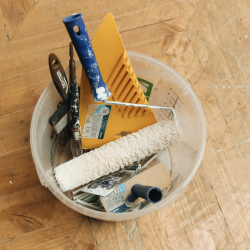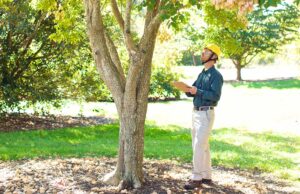Home improvement contractors play a vital role in enhancing the aesthetics and functionality of residential properties. However, amidst the excitement of renovations, one crucial aspect often overlooked is the potential risks associated with trees on the property. Trees can add beauty and value to a home, but they can also pose significant risks if not properly assessed. In this blog post, we will delve into the importance of Tree Risk Assessment for home improvement contractors, exploring the potential hazards, legal considerations, and how proactive assessment can contribute to a successful and safe renovation project.
Understanding Tree Risks
Before delving into why a Tree Risk Assessment is essential for home improvement contractors, it’s crucial to understand the potential risks associated with trees. Trees can pose threats such as falling branches, root damage, and overall structural instability. Recognizing these risks is the first step toward creating a safer working environment.
Legal Liabilities
Home improvement contractors are not only responsible for the quality of their work but also for ensuring the safety of the entire property during and after the renovation process. Ignoring the potential risks posed by trees can lead to legal liabilities in case of accidents or damages. A Tree Risk Assessment helps contractors identify and mitigate these risks, minimizing the chances of legal complications.
Protecting Workers and Equipment
Renovation projects often involve heavy machinery, tools, and construction materials. Trees in close proximity to the work area can pose a threat to the safety of workers and equipment. Assessing tree risks enables contractors to implement necessary safety measures, ensuring the protection of everyone involved in the project.
Preserving Valuable Trees
While safety is a top priority, a Tree Risk Assessment also helps in identifying ways to preserve valuable trees on the property. Contractors can work with arborists to develop strategies that allow for both the successful completion of the renovation project and the conservation of significant trees.
Insurance Considerations
Insurance companies may require evidence of a Tree Risk Assessment as part of the coverage for a renovation project. Being proactive in assessing tree risks not only fulfills insurance requirements but also demonstrates a commitment to safety, potentially leading to lower insurance premiums.
Community and Environmental Impact
Home improvement contractors play a role in the broader community and environment. A Tree Risk Assessment contributes to responsible and sustainable construction practices. It ensures that the renovation project minimizes negative impacts on the local ecosystem and maintains a healthy balance between development and nature.
Client Satisfaction and Project Success
A safe and well-planned renovation project contributes to client satisfaction. By addressing tree risks early in the planning phase, contractors can avoid delays, unexpected expenses, and safety issues, ultimately leading to the successful completion of the project.
Conclusion
In conclusion, a Tree Risk Assessment is a crucial step for home improvement contractors to ensure the safety of their projects, comply with legal requirements, and contribute to sustainable construction practices. By understanding and addressing tree risks, contractors not only protect themselves from potential liabilities but also enhance the overall quality and success of their renovation endeavors. Embracing a proactive approach to tree assessment is not just a legal necessity; it is a commitment to responsible and safe construction practices that benefit both the contractors and the communities they serve.


